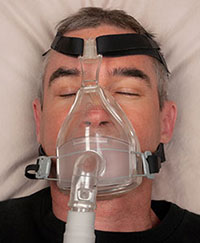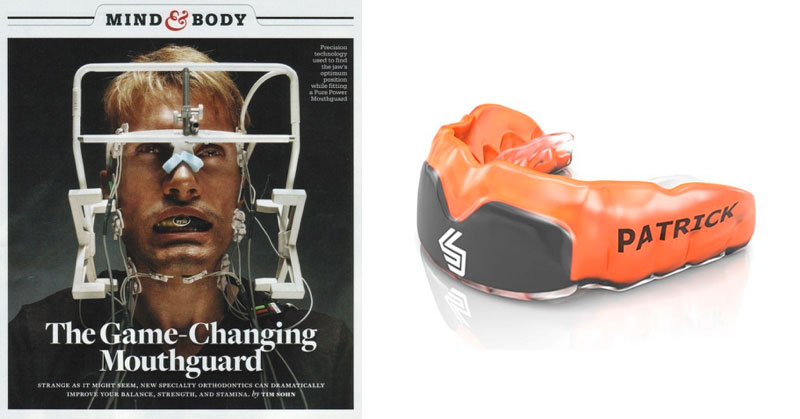Sydenham Family Dental | Biological & Comprehensive Dentistry
YOUR BEST DENTAL EXPERIENCE
Neuromuscular Dentistry
'TMJ', Head, Neck & Facial Pain Disorders
What does this term mean? There have been many terms used over the years that basically are trying to capture the essence of dysfunction of the jaw joints ( there are two) and muscles of the head and neck (which are paired). When this system is out of balance, it creates dysfunction, pain, crooked teeth, head, neck and facial pain disorders,’TMJ’ disorders, impaired athletic performance and sleep disorders. At a very basic level, the cause for much of this is the same. Imbalance in the system. It was once explained to me, by an osteopathic physician, I believe, that the head is a highly specialized vertebrae. All vertebrae in our spine have three points of contact, like a three legged chair.

The exception is the head. It sits on two rockers (superior facets) with the vertebrae below (atlas). What is the third point of contact? The teeth!! Any impairment in how the teeth contact will torque and distort the connections and, more importantly, the paired muscles all the way down the spine.
This was nicely demonstrated in rats by D’Attilio et. al. in the Journal of Craniomandibular Practice, April 2005. A plastic filling placed on the molar of a rat created a distortion in the bite called a scoliosis. It was corrected by the removal of the filling.

It was also demonstrated in humans by Dr. Al Fonder in his classic text ‘The Dental Physician’
(published in 1984), in this case using mercury fillings to ’balance;’ the bite.

But why does jaw torque cause problems? What is torque? The best analogy I can think of is the
position of a plane in the air. The positioning is described as having Pitch, Roll and Yaw.



As Dr. Bob Jankelson used to say “If you can measure it, it is a fact, if you cannot, it is an opinion”. Much of my training over the last 25 years has been chasing the elusive PRP in patients who have very little adaptive capacity – the cases where the traditional therapies do not work. This whole area is fascinating and constantly evolving. For more in depth information, I urge you to explore the information in the links below.
For specifics on ‘TMJ’ and head neck and facial pain therapies these two sites are the most comprehensive: occlusiontmjauthority.com | www.leadingdentist.com
Snoring / Sleep Apnea Management


MicrO2 Product Video
Nightlase Snoring Technique
Nightlase Procedure with Dr. Schiffmam
Interceptive Orthodontics
Years ago, we did full service orthodontic treatment. Today we only treat children between the ages of 4-9 (approximately) while they still have their primary teeth. Our goal is to encourage proper development of the jaws so that there is sufficient space for all their permanent teeth while the jaws and teeth are still growing. We want the jaw form of the child on the right; big broad arches and wide nasal passages. The child on the left has malformed arches due to a compromised diet and probably poor nasal breathing.
Critical to all of this is proper nasal breathing, which we discussed in a previous section, The Importance of Proper Breathing. There is lots of information on this topic connectingheads.com/articles/the-airway-breathing-and-orthodontics/
Much of our early treatment is with ALF appliances. We do not do braces and refer on to orthodontists to do the final fine tuning if required. www.alforthodontics.com/


Athletic Enhancement
Specially designed oral appliances made to the PRP have made their way into professional athletics. A colleague of mine used the principles to develop the Pure Power Mouthguard which commercialized the product. However, it had only moderate success and minimal market penetration. Determining the correct PLP requires special measurement tools and a well-trained, experienced dentist. Again, it was not the plastic that was effective, but the jaw position. Micro-Dental labs out of California have picked up the ball and now can manufacture the PPM in an exclusive arrangement with Shock Doctor. The athletic appliances are made to the PLP tolerance determined by a trained dentist.


“I went through the painless process of TENSing: relaxing and aligning the jaw, followed by a custom fitting by a specially trained dentist, Dr. Bob Clinton, … the results for me were instant. I returned to compete in RAAM in 2010 with my Elite PPM and surpassed expectations with a personal best performance, I felt strong and well balanced throughout the race’s 3000 miles and I credit my superior alignment and body posture to my PPM”
– Tony O’Keeffe (2010 RAAM competitor 10 days, 8 hours 21 minutes)
